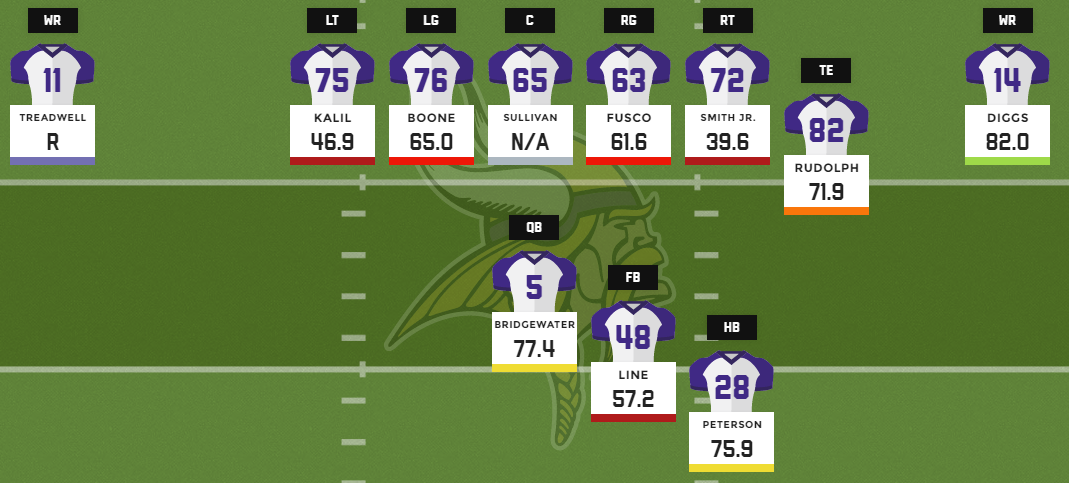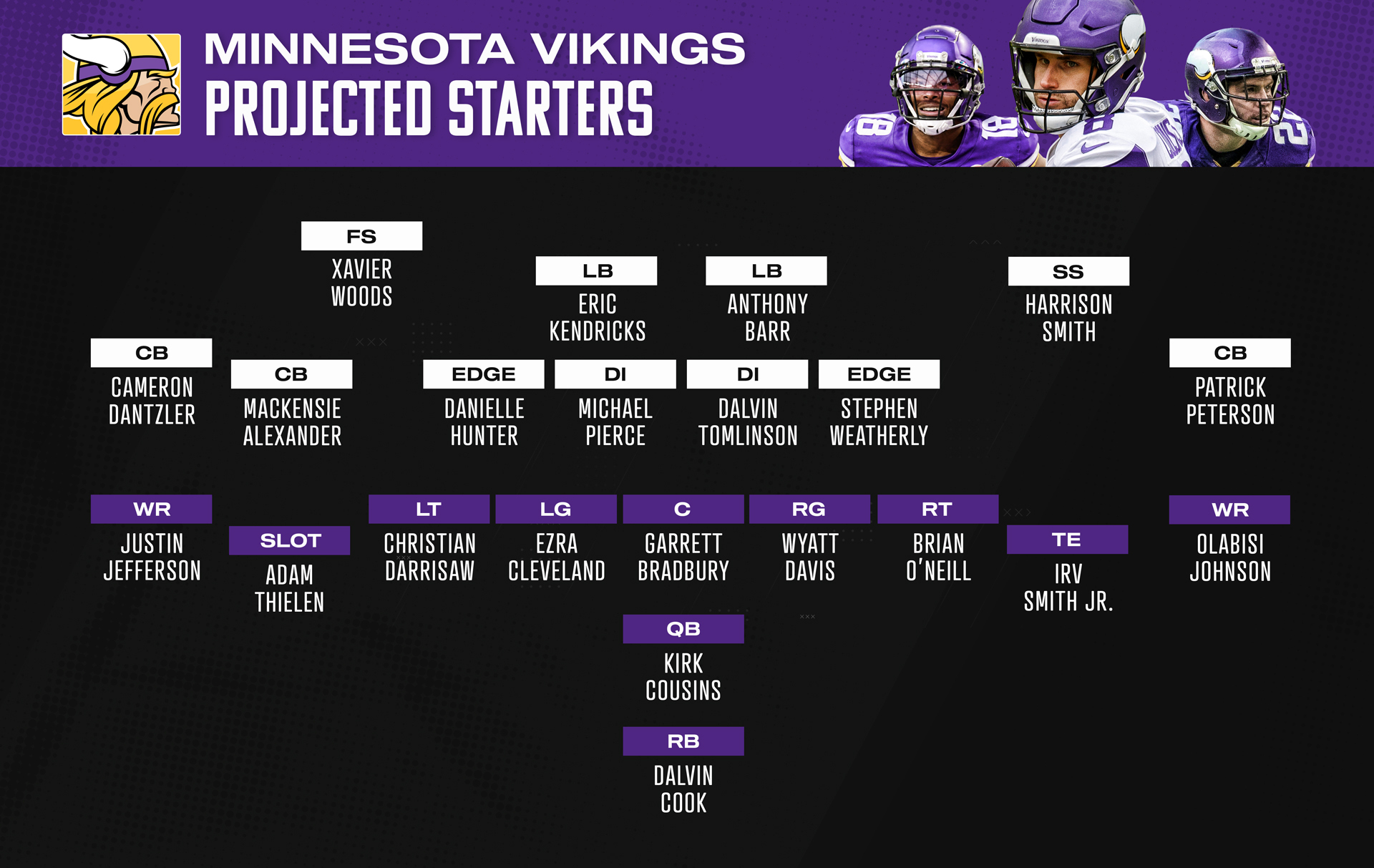Vikings’ Current Roster Depth

The Minnesota Vikings enter the 2023 season with a roster that boasts a blend of established veterans and promising young talent. The team’s depth chart is particularly strong in certain areas, while other positions could benefit from further reinforcement. This analysis will delve into the Vikings’ roster depth at each position, providing insights into their strengths and potential weaknesses.
Roster Depth Analysis
The Vikings’ roster depth can be analyzed by examining each position group, assessing their starters, backups, and potential contributors. This breakdown will offer a comprehensive view of the team’s talent pool and areas where they may need to improve.
| Position | Starters | Backups | Potential Contributors |
|---|---|---|---|
| Quarterback | Kirk Cousins | Jaren Hall | Nick Mullens |
| Running Back | Dalvin Cook, Alexander Mattison | DeWayne McBride | Ty Chandler |
| Wide Receiver | Justin Jefferson, Jordan Addison, K.J. Osborn | Jalen Nailor, Trishton Jackson | Thayer Thomas |
| Tight End | T.J. Hockenson | Josh Oliver | Ben Ellefson |
| Offensive Tackle | Christian Darrisaw, Brian O’Neill | Blake Brandel, Oli Udoh | Vederian Lowe |
| Offensive Guard | Ezra Cleveland, Ed Ingram | Josh Sokol, Austin Schlottmann | JD Spielman |
| Center | Garrett Bradbury | Austin Schlottmann | Josh Sokol |
| Defensive End | Danielle Hunter, Za’Darius Smith | Patrick Jones II, D.J. Wonnum | Luiji Vilain |
| Defensive Tackle | Jaren Hall, Harrison Phillips | Khyiris Tonga, Ross Blacklock | Esezi Otomewo |
| Linebacker | Eric Kendricks, Jordan Hicks | Troy Dye, Brian Asamoah | Ivan Pace Jr. |
| Cornerback | Patrick Peterson, Byron Murphy Jr. | Akayleb Evans, Andrew Booth Jr. | Mekhi Blackmon |
| Safety | Harrison Smith, Josh Metellus | Jay Ward, Lewis Cine | Jordan Akins |
| Kicker | Greg Joseph | None | None |
| Punter | Ryan Wright | None | None |
| Long Snapper | Andrew DePaola | None | None |
Key Position Battles

The Vikings have several key position battles that will be closely watched throughout training camp and the preseason. These battles will determine the starting lineup and the depth chart for the upcoming season.
Wide Receiver
The Vikings have a deep and talented wide receiver corps, but there are still some key position battles to be decided. The most notable battle is for the starting slot receiver position, with J.J. Arcega-Whiteside and K.J. Osborn vying for the role.
- Arcega-Whiteside is a former second-round pick who has struggled to find consistency in his NFL career. He has the size and physicality to be a dominant force in the slot, but he needs to improve his route running and consistency.
- Osborn is a more experienced player who has shown flashes of brilliance in his time with the Vikings. He is a reliable target who can make plays both inside and outside. He has shown the ability to be a dependable target and has good chemistry with Kirk Cousins.
The Vikings are also looking for a fourth wide receiver to round out their receiving corps. Brandon Powell and Trishton Jackson are the leading contenders for this role.
- Powell is a versatile player who can play both wide receiver and returner. He is a good route runner and has good hands. He has shown promise as a slot receiver and has good hands.
- Jackson is a big-bodied receiver who has the potential to be a red zone threat. He is still raw, but he has the talent to develop into a valuable asset. He has good size and potential, but needs to improve his route running and consistency.
The competition at wide receiver is going to be fierce, and it will be interesting to see who emerges as the starter and who earns a spot on the final roster.
Impact of Depth on Vikings’ Success: Vikings Depth Chart

The Vikings’ roster depth could significantly impact their performance during the upcoming season. The team’s ability to overcome injuries and compete in close games will be heavily influenced by the quality and experience of their backups.
Depth’s Potential Benefits, Vikings depth chart
The Vikings’ depth at various positions can provide numerous benefits, including:
- Improved Performance: Depth allows for healthy competition during training camp and the regular season, which pushes starters to perform at a higher level. The presence of capable backups also ensures that the team can maintain a consistent level of play even when starters are injured or underperforming.
- Injury Management: Having reliable backups allows the Vikings to manage injuries more effectively. If a key player goes down, the team can rely on a capable replacement without a significant drop in performance. This can be crucial in a long and grueling NFL season, where injuries are inevitable.
- Flexibility in Game Plan: Depth provides the Vikings with more flexibility in their game plan. For example, having multiple capable running backs allows the team to utilize different offensive schemes and keep opposing defenses guessing. Similarly, having multiple pass catchers can help exploit mismatches in the secondary.
Depth’s Potential Drawbacks
While depth is generally considered a positive, it can also have some drawbacks:
- Salary Cap Constraints: Building depth requires investing in a larger roster, which can put pressure on the salary cap. The Vikings need to carefully manage their resources to ensure they have enough cap space to acquire and retain talent at all positions.
- Chemistry and Cohesion: A large roster can sometimes make it challenging to maintain team chemistry and cohesion. Players may feel less connected to the team if they are not consistently playing, which can affect morale and overall performance.
- Limited Playing Time for Backups: Backups often receive limited playing time during the regular season. This can make it difficult for them to stay sharp and perform at a high level when called upon.
Impact on Injury Management and Close Games
The Vikings’ depth could play a crucial role in their ability to overcome injuries and compete in close games.
- Overcoming Injuries: In 2022, the Vikings were able to overcome several key injuries, thanks in part to their depth at positions like wide receiver and defensive line. The team’s ability to maintain a competitive level of play despite injuries was a testament to the quality of their backups. The Vikings’ depth will be tested again in 2023, and their ability to overcome injuries will be a key factor in their success.
- Competing in Close Games: Depth can also be crucial in close games. Having fresh legs and a variety of offensive and defensive options can give the Vikings an edge in the fourth quarter. The ability to rotate players can help maintain energy levels and keep the opposing team guessing.
Vikings depth chart – The Vikings’ depth chart at wide receiver is looking particularly strong, with the addition of J.J. McCarthy. McCarthy’s collegiate performance, as seen in jj mccarthy stats , suggests he has the potential to be a significant contributor to the team.
This depth at wide receiver could lead to a more dynamic offense, giving the Vikings more options and making it harder for opposing defenses to plan for their attack.
The Vikings depth chart is looking particularly thin at the moment, especially with the recent news of a key player suffering a torn meniscus. A torn meniscus can be a significant setback, requiring surgery and a lengthy recovery period, as explained in this comprehensive guide on torn meniscus recovery.
The Vikings will need to rely on their remaining players to step up and fill the void left by the injured player, making the depth chart even more critical to their success this season.
